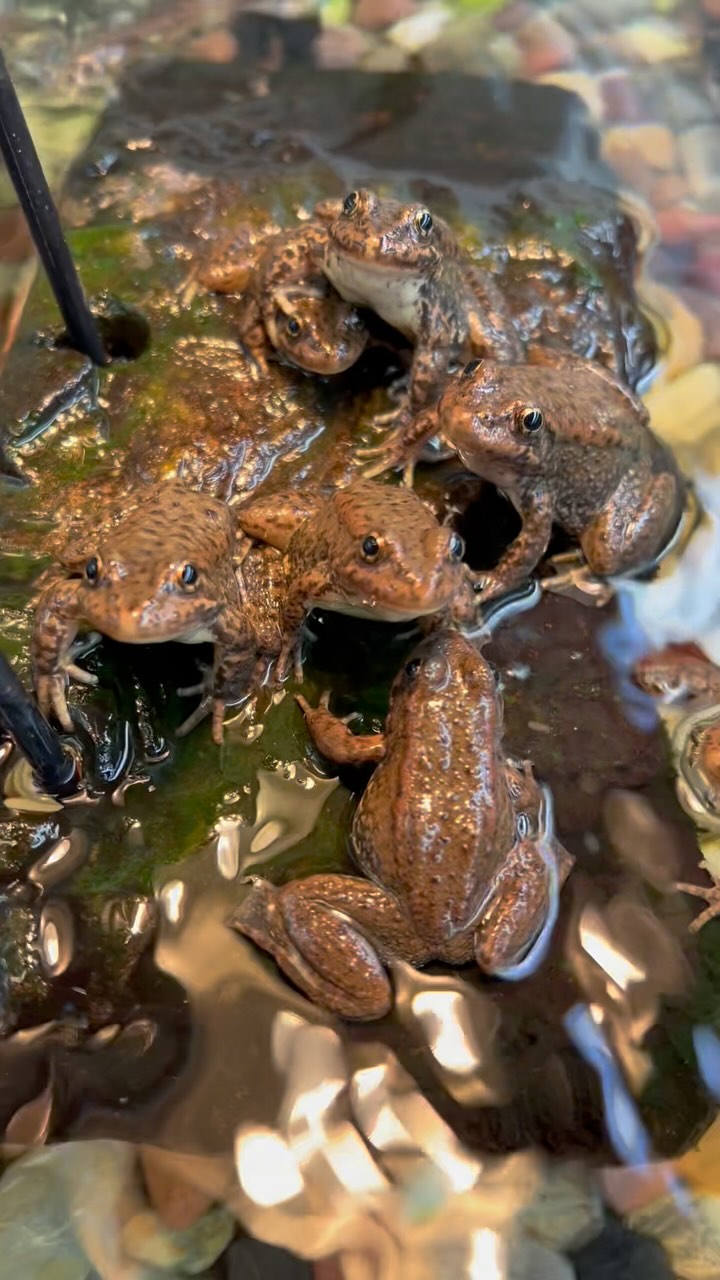- Understanding the global significance of World Frog Day and raising awareness about amphibian conservation efforts.
- Exploring the role of zoos, particularly the Oakland Zoo, in supporting wildlife conservation and protecting endangered frog species such as the yellow-legged frog.
- Examining the threats faced by amphibians worldwide, with a focus on chytridiomycosis, a fungal disease affecting frog populations.
- Discussing innovative conservation strategies, including immunization programs and habitat restoration, to combat the decline in frog populations.
- Highlighting the importance of biodiversity centers in fostering species recovery and maintaining ecological balance.
World Frog Day serves as a crucial initiative to spotlight the conservation needs of amphibians globally. Frogs and other amphibians play vital roles in ecosystems, acting both as predators and prey, which helps maintain the balance of populations in their habitats. As bioindicators, their health reflects the well-being of their environment, making their conservation status a pressing concern for ecologists and rescuers alike.
Amphibians face a barrage of threats, most notably from habitat destruction, pollution, climate change, and diseases. The international decline in frog populations is alarming, with a significant number of species classified as endangered. Among these myriad challenges, the chytrid fungus poses a particularly grave threat. Known as chytridiomycosis, this disease has decimated amphibian populations in environments around the world, leading to dramatic decreases and even extinction in some species.
The Oakland Zoo’s yellow-legged frog conservation program exemplifies modern conservation efforts aimed at reversing these alarming trends. Engaging in a symbiotic partnership with wildlife scientists and conservationists, the Zoo plays a leading role in safeguarding this endangered species. The innovative use of immunization against chytrid fungus demonstrates a proactive approach to combating this severe threat. By raising frogs in a controlled environment, scientists can manage exposure to pathogens, providing these animals with a fighting chance to survive post-release into their native habitats.
The significance of World Frog Day extends to the strategic operations and collaborations that zoos manage. Zoos, particularly those driven by conservation goals like Oakland Zoo, provide indispensable support in protecting species teetering on the brink of extinction. By investing in biodiversity centers, they nurture threatened species and educate the public about the role every species plays in their natural ecosystems. The care and expertise required to facilitate these recuperation efforts signify the dedication of zoo professionals and scientists working tirelessly to preserve Earth’s biological heritage.
Chytrid fungus illustrates one of the most pressing threats to amphibian species. This pathogen attacks the skin of frogs, crucial for their respiration and hydration. Dealing with such a resilient disease demands an intersection of scientific innovation and devoted conservation work. Advancements in immunization techniques have opened paths to potentially safeguarding entire populations. Through controlled exposure in a safe environment, programs can induce immunity, preparing frogs to withstand the disease upon their reintroduction to the wild.
Habitat restoration further complements these methods. Restoring and preserving the natural habitations of these species ensures that released individuals can thrive in healthier, more supportive environments. Integrating these strategies as part of holistic conservation programs magnifies their effectiveness, gradually safeguarding not just individual species but the broader biodiversity they support.
Amid these efforts, biodiversity centers emerge as pivotal to the long-term health of ecosystems. These centers provide a sanctuary for research and education that are transformative for conservation biology. By fostering species recovery beyond frogs to include a myriad of flora and fauna, these facilities underscore the intricate tapestry of life dependent on each thread being maintained intact.
The continual effort of institutions like Oakland Zoo showcases the blend of science, conservation, and public engagement necessary to confront the biodiversity crisis. As World Frog Day highlights, the plight and recovery of frogs carries implications for the broader conservation landscape. Each frog saved symbolizes a step towards ecological preservation.
Seamlessly intertwined with these movements are educational initiatives intended to kindle a sense of responsibility among the public. Raising awareness about the importance of amphibians and encouraging conservation-minded behaviors in everyday lives are vital components in rallying both local and global support for policies and practices that promote environmental sustainability.
Protecting our planet’s frogs extends beyond preserving a single species; it speaks to a commitment to our planet. Conservation demands collective action—a fusion of science, awareness, and policy—to empower resilience in nature’s ecosystems. As each World Frog Day reminds us, the recovery of frogs is an emblem of hope—a testament to human ingenuity and commitment that, together, can rewrite the future for these remarkable amphibians.
*****
Source Description
We hop you are having a wonderful WORLD FROG DAY 🐸
At Oakland Zoo we are helping save yellow-legged frogs, who are being decimated by a deadly fungus called chytrid.
We immunize frogs to the disease, raise them here at our biodiversity center, then release them back into the wild to help boost their population.
📸: Tory Parkinson


